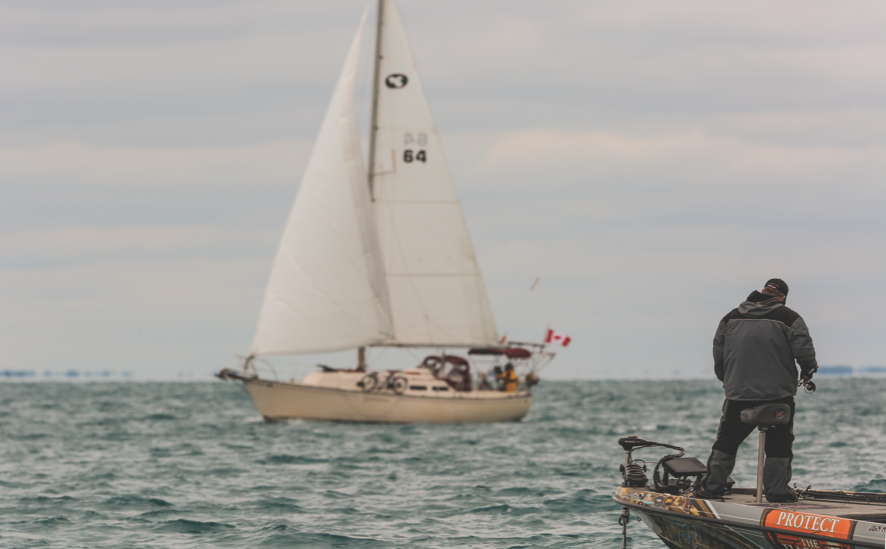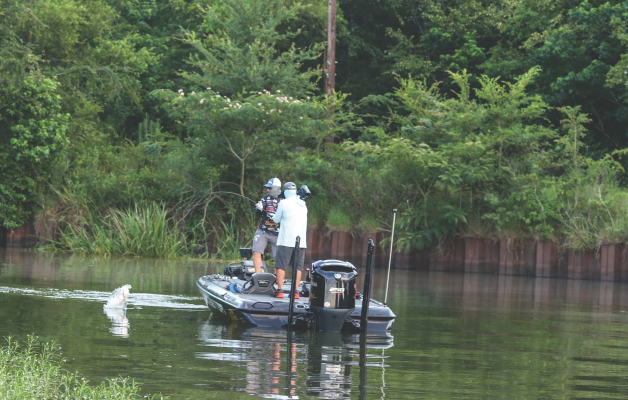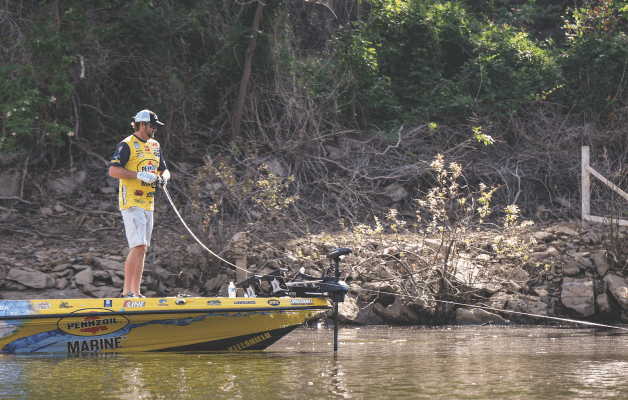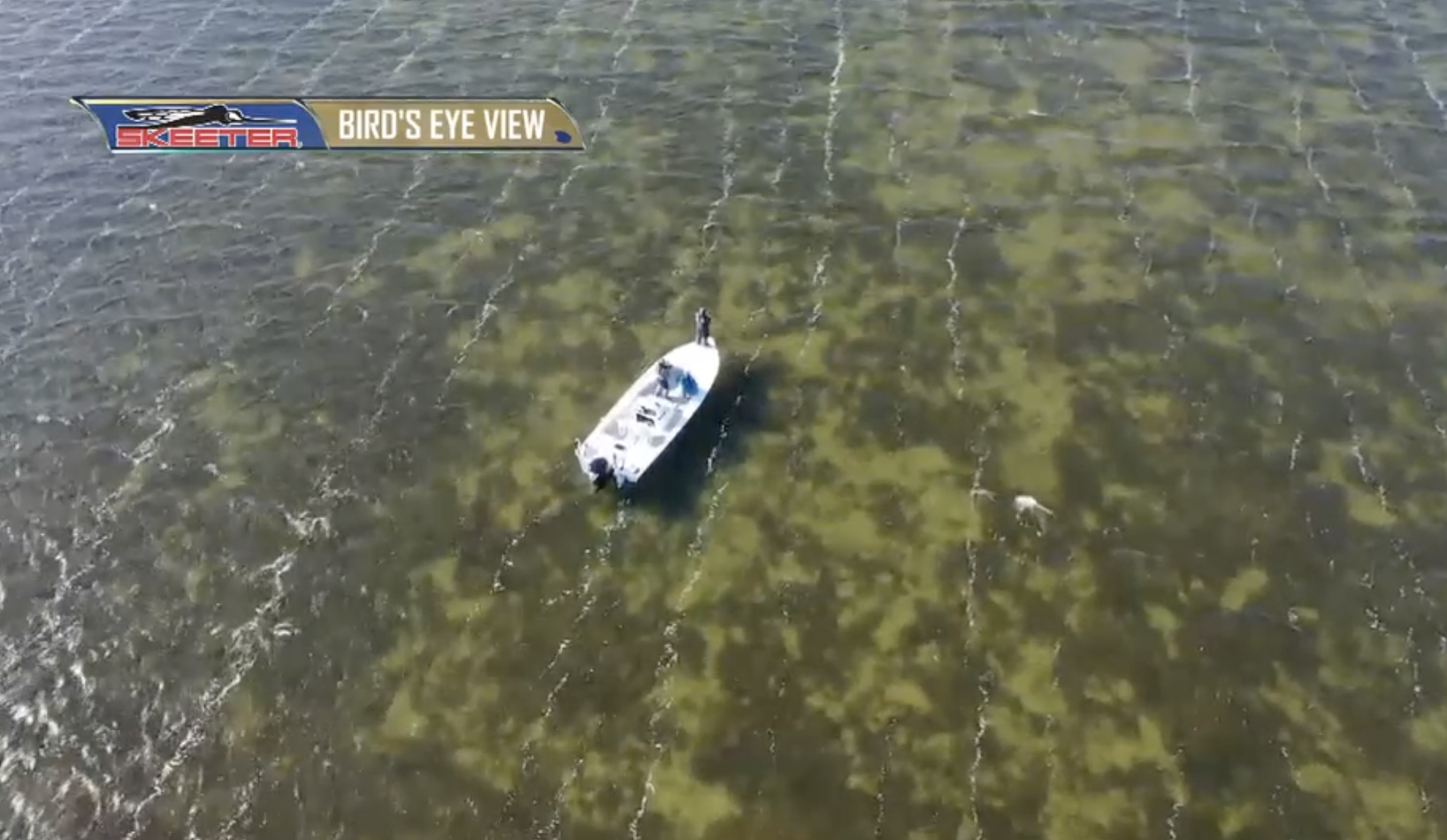
Written by
David A. Brown
Day 2 dawned with big north winds whipping the Texas Coast. The 15-25 mph blow will later change to an east-northeast direction; and while these conditions present certain challenges, it’s not all negative.
Starting with the obvious downsides, wind roils open areas and complicates navigation. Tournament waters are bordered by a long stretch of barrier islands, but many have had to traverse waters exposed to a wind blowing right down the pipe.
Those fishing protected areas will see less wind impact. For example, Day-1 leaders Mark Menendez and Ricky Bort returned to a narrow canal far north of the takeoff site. This spot produced their best fish yesterday.
“We beat our brains out for about an hour and 40 minutes,” Menendez said of the initial run. “It wasn’t too bad; we just had to be careful about how we got here.”
Second place Glenn Vann and Thomas Barlow are also working protected areas. They’re hunting schools of reds around oyster bars within a marshy maze.
Others using land masses to fish leeward areas have been able to manage the situation, but some, like Dwayne Eschete and Patrick Walters have embraced the Day-2 wind. Starting the day in fifth, the anglers moved up to third, after Walters boated the day’s biggest fish — a 7-pound, 10-ounce Texas beauty. (Weights unofficial until weigh ins.)
Yesterday, Eschete expressed optimism for today’s stronger winds: “We’re going to be able to cut a lot of drifts, a lot of quick drifts. Today (Day 1) we had 10 mph winds and we were drifting at .5 mph. On Day 2, we’re going to drift at 1.5 to 1.7.
“What that’s going to do is give us more areas to fish in quicker time. It’s going to work out really good for us.”
Chris Zaldain and Ryan Rickard, third on Day 1, are also capitalizing on the day’s complexion. They committed early to a blind casting strategy and playing the wind will only help their game.
“For us, it’s not sight fishing, it’s all casting, which sets us up well for later in the tournament,” Zaldain said at the Day-1 weigh ins. “It sounds like some teams are looking at their fish, but what we’re doing is straight up bass fishing — casting and winding.”
This strategy has paid off today, as a late-morning look at RedTrakk shows Zaldain and Rickard have improved to second, after briefly taking the lead with a limit of 10 pounds, 8 ounces.
Water clarity is always important to the redfish game and while blustery conditions can muddy shallow flats, wind and tide will actually move cleaner water into and out of various areas. This point is front-of-mind for teams fishing open areas, but for those who found their primary areas blown out, the day will require flexibility.
Veteran redfish pro Ron Hueston said: “Adjust on the fly. Cover a lot of water and try to make something happen.”
Hueston’s partner, Elite pro Derek Hudnall did just that by tapping into his bass instincts and switching to a ChatterBait. Noting that the bait’s flash and vibration was a good fit for the stirred waters, Hudnall tempted a couple keepers in the first two hours.
Trait Zaldain, who’s fishing with Matt McCabe also boated a pair of 5-pounders with a ChatterBait.
Strategically, windy days benefit anglers working the shallow flats so prevalent to this fishery. Casting downwind is the norm and a stiff wind at your back really stretches those presentations.
Not only does this allow you to reach wary fish you may not have reached in calm conditions, it also helps conceal your presence by lessening the “pressure wake” of a drifting boat’s water displacement.
When targeting requires a tough cast, heavier, streamlined baits like jigs and spoons thrown on braided line knife through the blow. Today, Zaldain upsized his spoon for greater wind penetration.
One thing to note is that windy days tend to curtail recreational boat traffic. That could bode well for competitors who may experience less intrusion than a calmer weekend typically brings.
It will be interesting to see how the day’s conditions impact the final leaderboard. Safe to say that those who excel will be the ones who best manage the day’s conditions.








